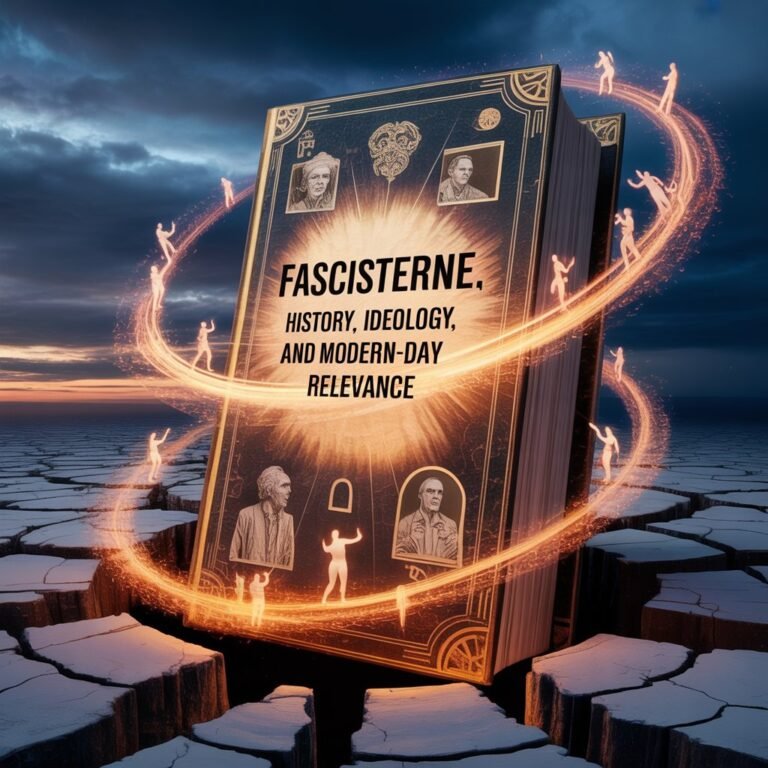The word fascisterne refers to “the fascists,” a political group and ideology that emerged in the early 20th century and left a deep mark on world history. Fascism is characterized by authoritarian control, nationalism, suppression of opposition, and strong centralized power. When we talk about fascisterne, we are referring to those individuals, groups, and movements that embraced this ideology, from Mussolini’s Italy to Nazi Germany and beyond. Learning about fascisterne is essential to understanding the dangers of totalitarianism and recognizing how similar movements can still influence political and social landscapes today.
Who Were Fascisterne? A Historical Overview
Historically, fascisterne were groups that followed fascist ideology, which first gained power under Benito Mussolini in Italy after World War I. The fascists promoted a vision of a strong state, one leader, and total loyalty to the nation. They rejected democracy, free speech, and political pluralism, instead enforcing strict order through propaganda, censorship, and violence. Later, Adolf Hitler and the Nazis in Germany adapted fascism to their own vision, adding racial ideologies that resulted in horrific consequences like the Holocaust. Thus, when discussing fascisterne in history, we are looking at movements that prioritized absolute power, nationalism, and suppression of freedom at the expense of human rights.
The Core Ideology of Fascisterne
The beliefs of fascisterne were rooted in a desire for national strength and control. Some of the defining features of fascism include:
-
Authoritarian leadership – One central figure with unquestionable power.
-
Nationalism – Extreme pride in one’s nation, often combined with xenophobia.
-
Suppression of dissent – Opposition parties, free press, and activists were silenced.
-
Militarism – Fascisterne often glorified war and military strength as tools of power.
-
Control of culture and society – Education, arts, and media were manipulated to spread propaganda.
These values created environments where fear, violence, and obedience became the norm. By analyzing the ideology of fascisterne, we see how dangerous unchecked power can be.
Fascisterne in Europe: From Italy to Germany
The rise of fascisterne in Europe was not limited to Italy. In Germany, Adolf Hitler’s National Socialist German Workers’ Party (the Nazis) became one of the most infamous fascist regimes in history. Similarly, fascist movements gained traction in Spain under Francisco Franco and in other countries that sought authoritarian solutions during times of economic crisis. The appeal of fascisterne often came during times of instability, when promises of national pride, order, and economic revival attracted people desperate for change. However, these promises were achieved through oppression, discrimination, and war, leaving behind devastating consequences that reshaped the world.
Modern-Day Use of the Term Fascisterne
Today, the term fascisterne is sometimes used not only in historical discussions but also as a way to describe far-right or extremist groups that display authoritarian and intolerant behaviors. While modern political movements may not always fully align with classical fascism, their tactics—such as spreading propaganda, restricting freedoms, and promoting nationalism—can resemble the behaviors of fascisterne from the past. This is why understanding the history of fascism is crucial for recognizing warning signs and preventing history from repeating itself.
The Dangers of Ignoring the Lessons of Fascisterne
Studying fascisterne is not just about learning history; it is about safeguarding democracy and human rights today. When societies forget the dangers of authoritarian ideologies, they risk falling into the same traps of intolerance, division, and violence. The story of fascisterne teaches us the importance of protecting freedom of speech, encouraging diversity, and resisting movements that promote hatred or absolute power. By remembering the past, we ensure that the suffering caused by fascist regimes is never repeated in the future.
Conclusion: Why Fascisterne Still Matter Today
In conclusion, fascisterne represent one of the darkest chapters in modern history, where authoritarianism and intolerance replaced freedom and democracy. From Mussolini’s Italy to Hitler’s Germany, fascist regimes demonstrated how dangerous centralized power can become when citizens’ rights are ignored. Today, the term serves as both a historical reminder and a warning against extremist ideologies that still surface in different forms. Understanding fascisterne is not just about studying the past—it is about protecting the future by promoting freedom, tolerance, and democracy.
Frequently Asked Questions (FAQ) About Fascisterne
Q1: What does the word “fascisterne” mean?
The word “fascisterne” is Danish for “the fascists,” referring to individuals and groups who follow fascist ideology.
Q2: Who were the most famous fascisterne in history?
The most well-known fascisterne were Benito Mussolini in Italy and Adolf Hitler in Germany, whose regimes changed the course of world history.
Q3: What did fascisterne believe in?
They believed in authoritarian control, extreme nationalism, suppression of opposition, and militarism.
Q4: Are there fascisterne in modern times?
While classical fascism declined after World War II, some extremist groups and far-right movements today display ideologies similar to fascisterne.
Q5: Why is it important to study fascisterne?
It is important because studying fascisterne helps us recognize the dangers of authoritarianism and ensures that democratic freedoms are protected for future generations.
